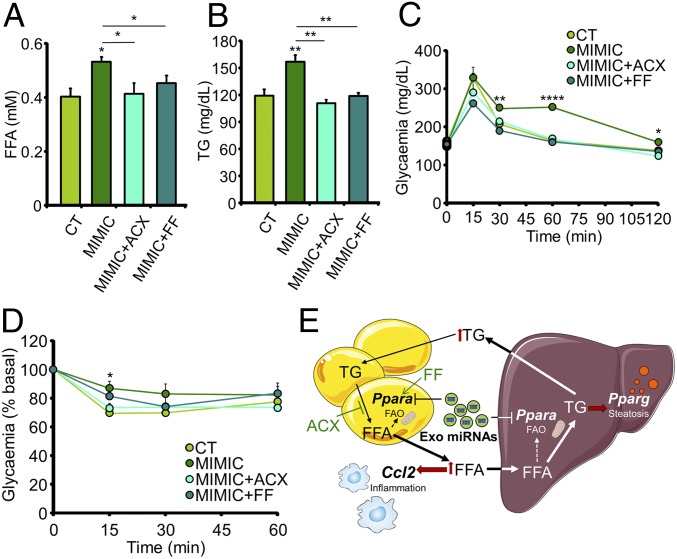Fig. 6.
Decreasing FFA plasma levels partially revert the pathologic phenotype. (A and B) Plasma FFA (A) and TG (B) concentrations from chow-fed mice after 4 wk of injections of exosomes loaded with mimics of four miRNAs enriched in obese exosomes and simultaneously administered acipimox (ACX) or fenofibrate (FF) orally. (C and D) IpGTT (C) and insulin tolerance test (0.5 U/kg) (D) in the mice described in A and B. (E) Proposed model: Injection of exosomes transfected with synthetic miRNAs simulating those enriched in obesity decreases Ppara expression and oxidative capacity in the eWAT. This is associated with increased FFA release to the bloodstream, which in turn induces adipose inflammation and hepatic steatosis. Treatment with the lipolysis inhibitor ACX or the PPARα agonist FF decreases plasma FFAs and partially reverts this phenotype. Data are presented as mean ± SEM. n = 5 per group (A–D). *P < 0.05, **P < 0.01, ****P < 0.001 with respect to the control (CT) group unless otherwise indicated, Student’s t test.

